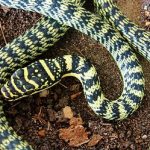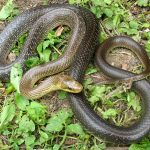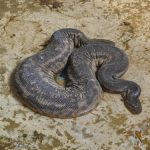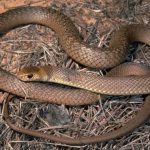The Kirtland’s Snake, blessed with a relatively better vision than other snakes, is the only one belonging to the Clonophis genus. It has keeled skin and males are shorter than females. Mostly fond of staying inside burrows, the snake flattens themselves completely in order to deceive its predators. From the ending of March to the beginning of November, it remains the most active. Die to its gentle nature, many snake enthusiasts consider this as a pet.
| Kingdom |
Animalia |
| Phylum |
Chordata |
| Clade |
Tetrapodomorpha |
| Class |
Reptilia |
| Order |
Squamata |
| Suborder |
Serpentes |
| Family |
Colubridae |
| Genus |
Clonophis |
| Scientific Name |
Clonophis kirtlandii |
| Other names |
Kirtland’s red snake, Ohio Valley water snake, Kirtland’s water snake, spreadhead, little red snake, and Cora Kennicott’s snake |
| Size |
30-62 cm |
| Color |
Grayish black body, two series of black sports on both back and sides and alternate small spots on both sides, red ventral scale with black border |
| Distribution |
Western Pennsylvania, Ohio, Indiana, southern Michigan, northern Kentucky, Illinois |
| Habitat |
Wet meadows, swamps, forested woodlands, marshes and sometimes near parks and fields, and cemeteries |
| Diet |
Salamander, slug, toad, earthworms, and crayfish |
| Hibernation period |
During winter and summer in crayfish burrows |
| Predators |
Fox, owl, cat, hawks, skunks, weasels, and raccoons |
| Venom fact |
Non-venomous |
| Breeding season |
May |
| Perturition period |
First of August-late September |
| Litter size |
4-22 |
| Mode of reproduction |
Ovoviviparous |
| Reproductive age |
2 years |
| Average lifespan |
5 years |
| IUCN Conservation Status |
Near Threatened |
Kirtland’s Snake Pictures Gallery
-
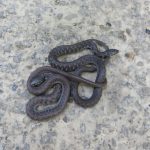
-
Clonophis Kirtlandii
-
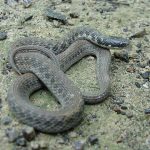
-
Images of Kirtland’s Snake
-
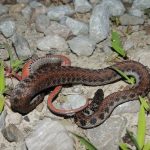
-
Kirtland Snake
-
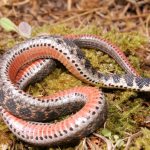
-
Kirtland’s Snake Images
-
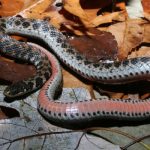
-
Kirtland’s Snake Photos
-
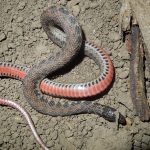
-
Kirtlands Snake Pictures
-
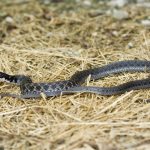
-
Kirtland’s Snake
-
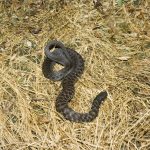
-
Pictures of Kirtlands Snake










